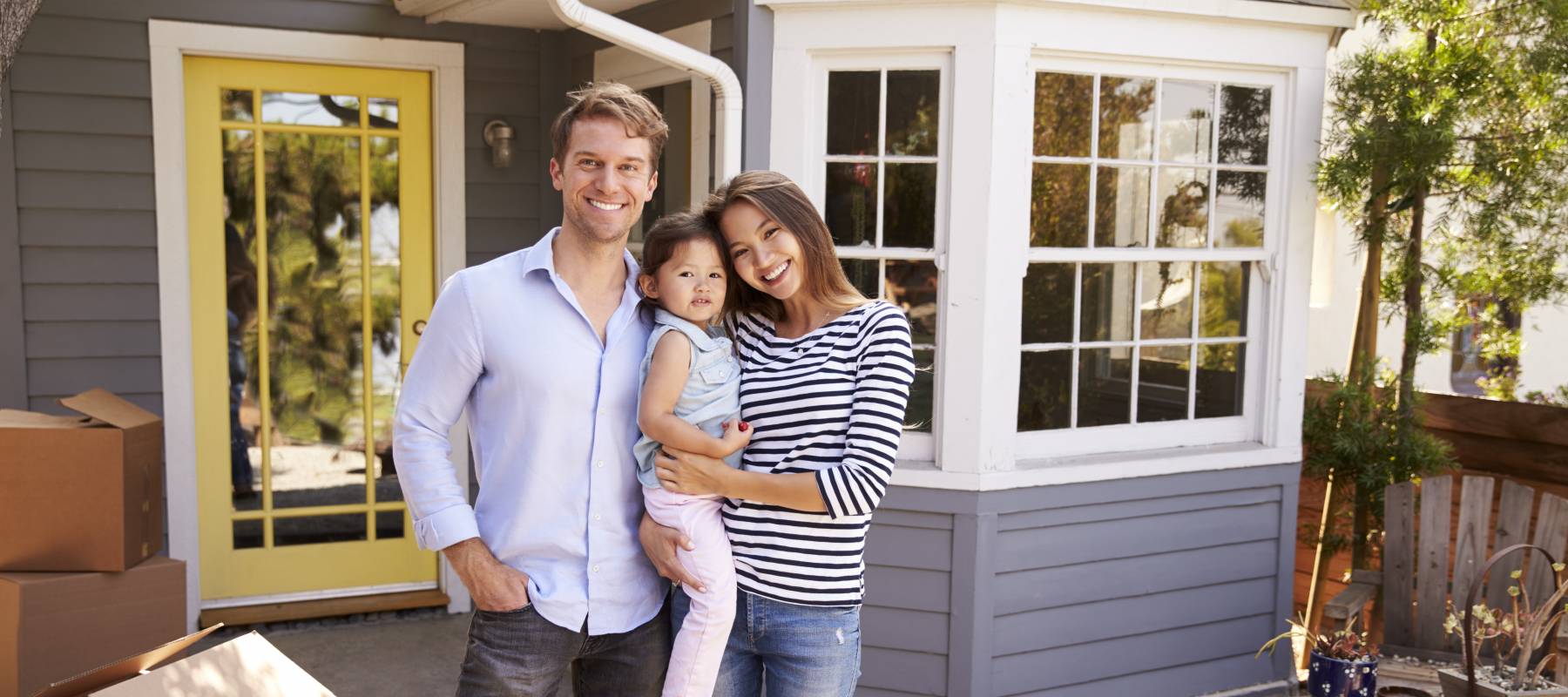Why renovate your home?
Some Canadian homeowners (like me) choose to renovate because they plan to live in their homes for many years and want a beautiful, comfortable space for that lifestyle. For others, it makes pure fiscal sense. Add up land transfer taxes, legal fees, realtor fees, penalties for breaking a mortgage, and miscellaneous moving costs, and it may actually be cheaper to sink $50,000 into renovations than to buy a new property.
“Unless you’re in your retirement years and trying to downsize your home, you’re more than likely trying to get a bigger house, which means more money,” says Krista Salter, a leading Canadian interior designer. “For some people, the cost of renovating equals out.”
Most importantly, home improvements can increase the value of a property. For example, a kitchen or bathroom renovation can boost the value of your home by between 75% to 100% of what you spent. That means that if you own a $500,000 home and update the bathroom for $25,000, your house would then be worth between $518,750 and $525,000, recouping most of your renovation costs. Consider it an investment.
Related: The best ways to invest in Canadian real estate
Where to start with home renovations?
If you don’t have a wad of cash to make over your house from top to bottom, focus on the renovations that add the most value to your property. Home renovations that generate the highest return on investment are kitchens, bathrooms, interior/exterior painting, decluttering, and updating décor.
“On the real estate market, those equal dollars,” says Salter. “It’s the first thing people see and want. It’s going to make your house more valuable and more appealing.”
One caveat: Watch out for “over-improving.” Depending on the real estate market and area, adding unnecessary, over-the-top finishes or creating unique features may not fetch the best financial return. For instance, dropping $65,000 to upgrade your basement when homes in your neighbourhood sell for $200,000 isn’t a wise choice. Adding a pool or wine cellar might actually turn off some buyers. When planning a project, research what houses are currently selling for in your neighbourhood and tailor your budget and expectations accordingly.
Renovation ROI in Canada

The percentage of your cost that you may recover when you sell your home
Data source: The Globe & Mail and Ontario Securities Commission
ROI aside, always prioritize pressing “911” projects first. For instance, tackle the leaky roof, crumbling brick, or dying furnace ASAP before moving on to renovations that have aesthetic value. Can’t afford a major home renovation? Luckily, there are plenty of budget-friendly alternatives that can boost your home’s appeal without costing a fortune.
“The easiest things are to paint, change your kitchen backsplash, or paint the kitchen cupboards,” says Salter. “Put in some pot lights and add storage with build-ins to give a new look and function for the space. Even simple things like adding drapery or decorative elements can change your space.”
What factors influence the cost of your home renovation?
When calculating costs, consider how these factors may influence your budget:
- Age: Renovating a 100-year-old house may unearth unwelcome surprises (think: knob-and-tube wiring, asbestos, lead pipes, etc.).
- Size: Larger space = more money. Though easy access to parking
- Labour quality: Are you hiring a reputable contractor with insurance and credentials? Or a local handyperson who does side gigs?
- Complexity: It’s usually bigger bucks to bust down walls, re-arrange plumbing or electrical systems, or add an extension.
- Timeframe: If you plan to sell soon, your best bet may be smaller, less expensive improvements that will freshen up your house, such as painting or improving curb appeal.
- DIY versus hiring a contractor: “Do it yourself” saves money and requires expertise and a considerable time commitment. As Salter says: “It’s way cheaper, but who really wants to do it themselves?”
- Fixtures/finish quality: A basic bathtub from Costco can cost as little as $400, whereas a Victoria and Albert clawfoot tub can run as high as $7,000.
- Other costs: Factor in designer/architect fees, building permits, costs associated with temporary relocation, appraisals, and a fund for emergencies. To be safe, experts advise you to tack on between 20% to 25% on top of your budget to handle unexpected costs.
How much should be budgeted?
“There’s no perfect number,” says Salter. “Because everyone’s house sizes are different, the amount of work is different.”
A general rule for homeowners is to budget 1% of a home’s value each year for ongoing maintenance and improvement. For example, if you own a $500,000 property, set aside $5,000 each year into a high-interest savings account (HISA). That way, you’ll have the dough on hand if you need to renovate unexpectedly.
For the sake of planning, here’s a breakdown of what it generally costs for the home improvements with the highest return on investment.
Kitchen renovation cost: $25,000 to $50,000
According to the Appraisal Institute of Canada, the average amount homeowners should spend on kitchen renovations is up to 10% to 15% of the overall value of their home. But if you’re renovating the kitchen for your “forever home” and plan on staying for more than five years, you can safely stretch the budget to 15% to 25%.

“Realistically, I would say the average amount for a kitchen would be $50,000,” says Salter. “A $35,000 kitchen renovation is cheap. We’re talking about appliances, countertops, a contractor, cabinetry—all of those things add up extremely quickly. It all depends on your finishes.”
Bathroom renovation cost: $20,000 and up
The average cost to renovate a bathroom factors in updates to the bathtub, shower system, toilet, vanity, sinks, faucets, tiles, flooring, countertops, light fixtures, windows, and labour. It could also involve moving fixtures, plumbing, electrical work, or knocking down walls to change the layout.
According to experts, you should budget up to 5% of the value of your home for a bathroom reno.
Painting cost: $10,000 and up
A fresh coat of paint does a world of good, offering an easy and inexpensive way to enliven a room. Cost depends on the size of your space, quality/brand of paint, and labour expenses (usually $1 or $1.50 per square foot).
Basement renovation cost: $20,000 and up
Basement renovations generally don’t come cheap. “If you’re just adding carpet and paint, it could be $8,000,” says Salter. “If you’re reconfiguring the whole thing and adding an extra ensuite, that’s a different animal.”
Tuning up a basement can involve installing drywall, insulation, flooring, lighting, and creating storage and moisture-proofing the space. If adding a bathroom, kitchenette, heating/air conditioning, cabinetry, and electrical upgrades, you could end up with a bill for as much as $50,000. For those on a budget, focus on creating a multi-purpose room that’s moisture-proofed to the nines.
How to finance home renovations
Not everyone has money lying around for a major home renovation, thus necessitating some smart financial planning in advance of the reno. Here are a few strategies for financing a project of this magnitude and minimizing the amount you’ll shell out for it.
Save up
While digging into your hard-earned savings may be painful, it will likely be more prudent than borrowing. The interest you can earn on a good savings account or GIC will max out at the 1% to 2% range; interest paid on borrowed funds will likely exceed that. If you already have a high-interest savings account to park your renovation money, check to make sure its interest rate is competitive with the accounts offered by top virtual banks, like the EQ Bank Savings Plus Account. You can then use forecasting features in budgeting apps like PocketSmith to get an accurate picture of how long it will take you to save up the money you need for the reno. Just avoid tapping into your emergency fund for purely cosmetic renovations; you’ll need that money one day for necessary repairs.
Personal loans for home improvement
If the anticipated cost of your home renovation exceeds the savings you’ve tucked away, you can consider borrowing some money to close the gap. Personal loans typically have fast approval times, low maximum loan amounts, and a short repayment schedule (usually one to five years), making them a good fit to finance small-scale renovations. Even if your anticipated loan amount is small, you should shop around to get the best loan rate possible; every 10th of a percent in interest means more money you’ll pony up. You can save yourself some research time by using a good loan comparison site like Loans Canada or LoanConnect rather than checking lenders one by one yourself. Just verify that your credit score is in good shape before you borrow money, as your score will significantly influence the interest rate you’re offered.
Mortgage refinancing
If you already have substantial equity in your home, you might consider a cash-out mortgage refinance rather than a standard personal loan. This is especially appealing if you plan to do a major renovation and if current mortgage rates have dropped since you took out your current mortgage. You can compare terms from various lenders and to calculate whether or not the new interest rate you’ll get from refinancing is worth the new mortgage’s associated closing costs.
Grants, loans and rebates for energy efficiency upgrades
Canadian federal, provincial, and municipal governments—as well as local utility companies—offer grants, loans, and rebates for energy-saving renovations. For example, Toronto homeowners can get a low-interest loan of up to $125,000 to cover the cost of home energy improvements through the Home Energy Loan Program. You can also search by province to see what financial incentives or programs are available. Recently, I got back several thousand dollars for insulating my basement crawlspace and upgrading to an energy-efficient furnace, water heater, and air conditioner.
Improving your home can be enjoyable and rewarding. As an increasing number of Canadians aim to enhance their home's ambiance and worth, understanding how to effectively plan a budget for these costs is crucial.







